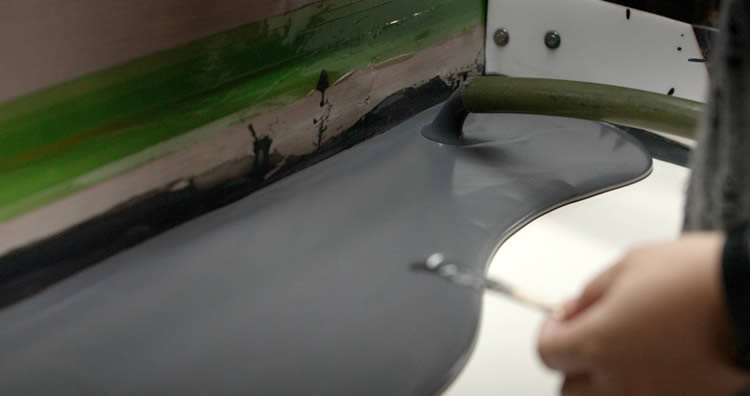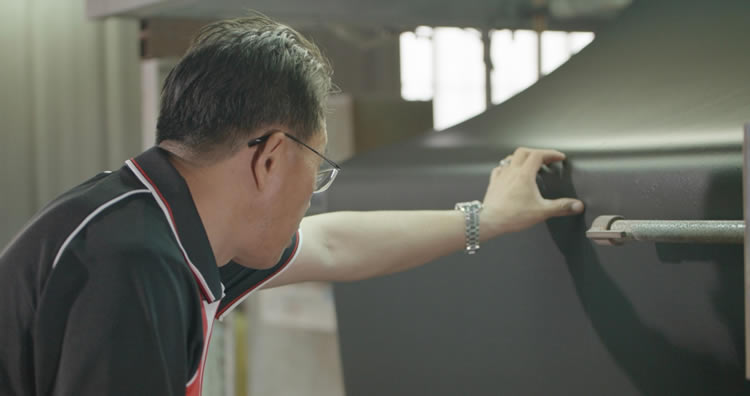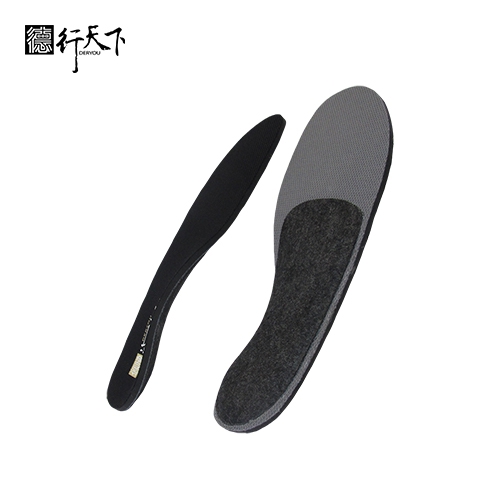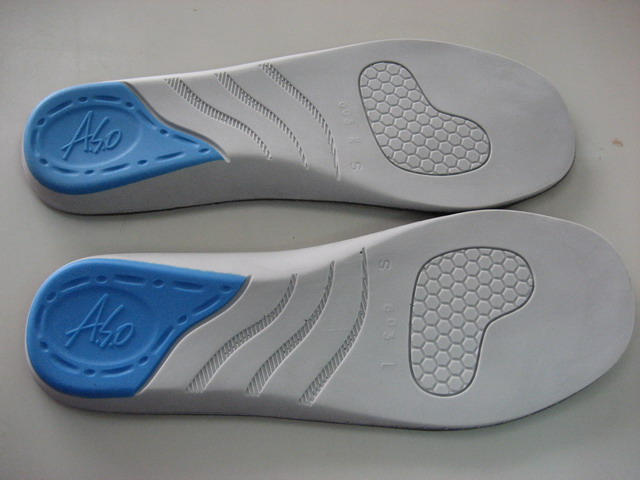
GuangXin Industrial Co., Ltd. is a specialized manufacturer dedicated to the development and production of high-quality insoles.
With a strong foundation in material science and footwear ergonomics, we serve as a trusted partner for global brands seeking reliable insole solutions that combine comfort, functionality, and design.
With years of experience in insole production and OEM/ODM services, GuangXin has successfully supported a wide range of clients across various industries—including sportswear, health & wellness, orthopedic care, and daily footwear.
From initial prototyping to mass production, we provide comprehensive support tailored to each client’s market and application needs.
At GuangXin, we are committed to quality, innovation, and sustainable development. Every insole we produce reflects our dedication to precision craftsmanship, forward-thinking design, and ESG-driven practices.
By integrating eco-friendly materials, clean production processes, and responsible sourcing, we help our partners meet both market demand and environmental goals.


At GuangXin Industrial, our core strength lies in our deep expertise and versatility in insole and pillow manufacturing. We specialize in working with a wide range of materials, including PU (polyurethane), natural latex, and advanced graphene composites, to develop insoles and pillows that meet diverse performance, comfort, and health-support needs.
Whether it's cushioning, support, breathability, or antibacterial function, we tailor material selection to the exact requirements of each project-whether for foot wellness or ergonomic sleep products.
We provide end-to-end manufacturing capabilities under one roof—covering every stage from material sourcing and foaming, to precision molding, lamination, cutting, sewing, and strict quality control. This full-process control not only ensures product consistency and durability, but also allows for faster lead times and better customization flexibility.
With our flexible production capacity, we accommodate both small batch custom orders and high-volume mass production with equal efficiency. Whether you're a startup launching your first insole or pillow line, or a global brand scaling up to meet market demand, GuangXin is equipped to deliver reliable OEM/ODM solutions that grow with your business.



GuangXin offers exceptional flexibility in customization and OEM/ODM services, empowering our partners to create insole products that truly align with their brand identity and target market. We develop insoles tailored to specific foot shapes, end-user needs, and regional market preferences, ensuring optimal fit and functionality.
Our team supports comprehensive branding solutions, including logo printing, custom packaging, and product integration support for marketing campaigns. Whether you're launching a new product line or upgrading an existing one, we help your vision come to life with attention to detail and consistent brand presentation.
With fast prototyping services and efficient lead times, GuangXin helps reduce your time-to-market and respond quickly to evolving trends or seasonal demands. From concept to final production, we offer agile support that keeps you ahead of the competition.
Quality is at the heart of everything we do. GuangXin implements a rigorous quality control system at every stage of production—ensuring that each insole meets the highest standards of consistency, comfort, and durability.
We provide a variety of in-house and third-party testing options, including antibacterial performance, odor control, durability testing, and eco-safety verification, to meet the specific needs of our clients and markets.
Our products are fully compliant with international safety and environmental standards, such as REACH, RoHS, and other applicable export regulations. This ensures seamless entry into global markets while supporting your ESG and product safety commitments.
At GuangXin Industrial, we are committed to integrating ESG (Environmental, Social, and Governance) values into every step of our manufacturing process. We actively pursue eco-conscious practices by utilizing eco-friendly materials and adopting low-carbon production methods to reduce environmental impact.
To support circular economy goals, we offer recycled and upcycled material options, including innovative applications such as recycled glass and repurposed LCD panel glass. These materials are processed using advanced techniques to retain performance while reducing waste—contributing to a more sustainable supply chain.
We also work closely with our partners to support their ESG compliance and sustainability reporting needs, providing documentation, traceability, and material data upon request. Whether you're aiming to meet corporate sustainability targets or align with global green regulations, GuangXin is your trusted manufacturing ally in building a better, greener future.
Looking for a reliable insole manufacturing partner that understands customization, quality, and flexibility? GuangXin Industrial Co., Ltd. specializes in high-performance insole production, offering tailored solutions for brands across the globe. Whether you're launching a new insole collection or expanding your existing product line, we provide OEM/ODM services built around your unique design and performance goals.
From small-batch custom orders to full-scale mass production, our flexible insole manufacturing capabilities adapt to your business needs. With expertise in PU, latex, and graphene insole materials, we turn ideas into functional, comfortable, and market-ready insoles that deliver value.
Contact us today to discuss your next insole project. Let GuangXin help you create custom insoles that stand out, perform better, and reflect your brand’s commitment to comfort, quality, and sustainability.
🔗 Learn more or get in touch:
🌐 Website: https://www.deryou-tw.com/
📧 Email: shela.a9119@msa.hinet.net
📘 Facebook: facebook.com/deryou.tw
📷 Instagram: instagram.com/deryou.tw
Taiwan OEM/ODM hybrid insole development factory
Are you looking for a trusted and experienced manufacturing partner that can bring your comfort-focused product ideas to life? GuangXin Industrial Co., Ltd. is your ideal OEM/ODM supplier, specializing in insole production, pillow manufacturing, and advanced graphene product design.
With decades of experience in insole OEM/ODM, we provide full-service manufacturing—from PU and latex to cutting-edge graphene-infused insoles—customized to meet your performance, support, and breathability requirements. Our production process is vertically integrated, covering everything from material sourcing and foaming to molding, cutting, and strict quality control.Thailand insole ODM design and production
Beyond insoles, GuangXin also offers pillow OEM/ODM services with a focus on ergonomic comfort and functional innovation. Whether you need memory foam, latex, or smart material integration for neck and sleep support, we deliver tailor-made solutions that reflect your brand’s values.
We are especially proud to lead the way in ESG-driven insole development. Through the use of recycled materials—such as repurposed LCD glass—and low-carbon production processes, we help our partners meet sustainability goals without compromising product quality. Our ESG insole solutions are designed not only for comfort but also for compliance with global environmental standards.Vietnam anti-odor insole OEM service
At GuangXin, we don’t just manufacture products—we create long-term value for your brand. Whether you're developing your first product line or scaling up globally, our flexible production capabilities and collaborative approach will help you go further, faster.Pillow OEM for wellness brands Indonesia
📩 Contact us today to learn how our insole OEM, pillow ODM, and graphene product design services can elevate your product offering—while aligning with the sustainability expectations of modern consumers.China pillow ODM development service
New research from the University of California, San Francisco and Stanford Medicine is challenging the long-held belief that the receptor for oxytocin, known as the “love hormone,” is essential for forming social bonds. The study, published in the journal Neuron, found that prairie voles bred without oxytocin receptors showed similar monogamous mating, attachment, and parenting behaviors to regular voles, and even gave birth and produced milk albeit in smaller quantities. This contradicts the previous idea that oxytocin is critical to these social behaviors and raises new questions about the role of the hormone in bonding. Removing the Oxytocin Receptor Does Not Interfere with Monogamy or Giving Birth Turning a decades-old dogma on its head, new research from scientists at University of California, San Francisco and Stanford Medicine shows that the receptor for oxytocin, a hormone considered essential to forming social bonds, may not play the critical role that scientists have assigned to it for the past 30 years. In the study, published on January 27, 2023, in the journal Neuron, the team found that prairie voles bred without receptors for oxytocin and showed the same monogamous mating, attachment, and parenting behaviors as regular voles. In addition, females without oxytocin receptors gave birth and produced milk, though in smaller quantities, than ordinary female voles. The results indicate that the biology underlying pair bonding and parenting isn’t purely dictated by the receptors for oxytocin, sometimes referred to as the “love hormone.” “While oxytocin has been considered ‘Love Potion #9,’ it seems that potions 1 through 8 might be sufficient,” said psychiatrist Devanand Manoli, MD, PhD, a senior author of the paper and member of the UCSF Weill Institute for Neurosciences. “This study tells us that oxytocin is likely just one part of a much more complex genetic program.” This is a photograph of two prairie voles. Credit: Nastacia Goodwin CRISPR Voles Pack a Surprise Because prairie voles are one of the few mammalian species known to form lifelong monogamous relationships, researchers study them to better understand the biology of social bonding. Studies in the 1990s using drugs that prevent oxytocin from binding to its receptor found that voles were unable to pair bond, giving rise to the idea that the hormone is essential to forming such attachments. The current project emerged from shared interests between Manoli and co-senior author and neurobiologist Nirao Shah, MD, PhD, then at UCSF and now at Stanford Medicine. Shah had been interested in the biology of oxytocin and social attachment in prairie voles since teaching about the oxytocin studies decades earlier. Manoli, who wanted to investigate the neurobiology of social bonding, joined Shah’s lab in 2007 as a postdoctoral scholar. For this study, 15 years in the making, the two applied new genetic technologies to confirm if oxytocin binding to its receptor was indeed the factor behind pair bonding. They used CRISPR to generate prairie voles that lack functional oxytocin receptors. Then, they tested the mutant voles to see whether they could form enduring partnerships with other voles. To the researchers’ surprise, the mutant voles formed pair bonds just as readily as normal voles. “The patterns were indistinguishable,” said Manoli. “The major behavioral traits that were thought to be dependent on oxytocin – sexual partners huddling together and rejecting other potential partners as well as parenting by mothers and fathers – appear to be completely intact in the absence of its receptor.” Labor and Lactation Even more surprising for Manoli and Shah than the pair bonding was the fact that a significant percentage of the female voles were able to give birth and provide milk for their pups. Oxytocin is likely to have a role in both birth and lactation, but one that is more nuanced than previously thought, Manoli said. Female voles without receptors proved perfectly capable of giving birth, on the same timeframe and in the same way as the regular animals, even though labor has been thought to rely on oxytocin. The results help to clear up some of the mystery surrounding the hormone’s role in childbirth: Oxytocin is commonly used to induce labor but blocking its activity in mothers who experience premature labor isn’t better than other approaches for halting contractions. When it came to producing milk and feeding pups, however, the researchers were taken aback. Oxytocin binding to its receptor has been considered essential for milk ejection and parental care for many decades, but half of the mutant females were able to nurse and wean their pups successfully, indicating that oxytocin signaling plays a role, but it is less vital than previously thought. “This overturns conventional wisdom about lactation and oxytocin that’s existed for a much longer time than the pair bonding association,” said Shah. “It’s a standard in medical textbooks that the milk letdown reflex is mediated by the hormone, and here we are saying, ‘Wait a second, there’s more to it than that.’” Hope for Social Connection Manoli and Shah focused on understanding the neurobiology and molecular mechanisms of pair bonding because it is thought to hold the key to unlocking better treatments for psychiatric conditions, such as autism and schizophrenia, that interfere with a person’s ability to form or maintain social bonds. Over the past decade, much hope was pinned on clinical trials using oxytocin to address those conditions. But those results were mixed, and none has illuminated a clear path to improvement. The researchers said their study strongly suggests that the current model – a single pathway or molecule being responsible for social attachment –is oversimplified. This conclusion makes sense from an evolutionary perspective, they said, given the importance of attachment to the perpetuation of many social species. “These behaviors are too important to survival to hinge on this single point of potential failure,” said Manoli. “There are likely other pathways or other genetic wiring to allow for that behavior. Oxytocin receptor signaling could be one part of that program, but it’s not the be-all end-all.” The discovery points the researchers down new paths to improving the lives of people struggling to find social connection. “If we can find the key pathway that mediates attachment and bonding behavior,” Shah said, “We’ll have an eminently druggable target for alleviating symptoms in autism, schizophrenia, many other psychiatric disorders.” For more on this research, see Were We Wrong About the “Love Hormone” Oxytocin? Reference: “Oxytocin receptor is not required for social attachment in prairie voles” by Kristen M. Berendzen, Ruchira Sharma, Maricruz Alvarado Mandujano, Yichao Wei, Forrest D. Rogers, Trenton C. Simmons, Adele M.H. Seelke, Jessica M. Bond, Rose Larios, Nastacia L. Goodwin, Michael Sherman, Srinivas Parthasarthy, Isidero Espineda, Joseph R. Knoedler, Annaliese Beery, Karen L. Bales, Nirao M. Shah and Devanand S. Manoli, 27 January 2023, Neuron. DOI: 10.1016/j.neuron.2022.12.011 Additional authors include: Ruchira Sharma, Rose Larios, Nastacia Goodwin, Michael Sherman and Isidero Espineda of UCSF, Maricruz Alvarado Mandujano, YiChao Wei, Srinivas Parthasarthy and Joseph Knoedler of Stanford, and Forrest Rogers, Trenton Simmons, Adele Seelke, Jessica Bond, and Karen Bales of UC Davis, and Annaliese Beery of UC Berkeley. This work was supported by NIH grants R01MH123513, R01MH108319, DP1MH099900 and R25MH060482, NSF grant, 1556974, and philanthropy. For details, see the study.
The strawberry poison-dart frog exhibits vivid colors that serve as a powerful warning signal to predators. Credit: John J. Wiens Researchers discovered that animal color vision evolved long before colorful fruits and flowers, with warning and sexual color signals developing 150 and 100 million years ago, respectively. Warning signals are more widespread and require less visual ability than sexual signals, which depend on advanced vision in both sexes. Colors play a significant role in communication both within and between animal species. Take, for instance, the peacock: it unfurls its vibrant, iridescent tail adorned with eyespots to catch the attention of peahens during courtship. This display is a classic example of sexual selection driven by color signaling. Conspicuous colors are also displayed by toxic animal species, including many venomous snakes and the brilliantly colored poison frogs of Central and South America, as a warning to potential predators. A recent study by University of Arizona researchers analyzed the evolutionary timeline of color vision in animals and the different functions of “conspicuous colors” in animals and plants. Conspicuous colors include colors like red, yellow, orange, blue and purple, which stand out against most backgrounds. Based on statistical analysis, the study found that color vision evolved in animals more than 100 million years before the emergence of colorful fruits and flowers. The study, led by John J. Wiens, professor in U of A Department of Ecology and Evolutionary Ecology, is published in the journal Biological Reviews. Functions of Conspicuous Colors in Animals and Plants The study focuses on two different types of color signals that animals use – warning and sexual. It also analyzes the color signals that plants use for flowers and fruits. In plants, conspicuous colors have two main functions, Wiens said: for fruits, to disperse the seeds; for flowers, to distribute pollen. “We wanted to know when bright coloration evolved and what was the purpose of that coloration. That’s largely why we pursued this study,” said Zachary Emberts, study co-author and an assistant professor of integrative biology at Oklahoma State University. Emberts was a postdoctoral scholar at the U of A when the study was conducted. The nonvenomous Arizona mountain kingsnake, which resembles a venomous coral snake, has a survival advantage by warning off would-be predators that avoid colorful coral snakes. Credit: John J. Wiens Color vision in animals evolved about 500 million years ago, while colorful fruits appeared around 350 million years ago and colorful flowers about 200 million years ago, Wiens said. Weins said warning color signals emerged before sexual color signals – around 150 million years ago. Sexual color signals emerged about 100 million years ago. “There has been a dramatic explosion of both warning and sexual color signals in the last 100 million years,” Wiens said. Factors Driving the Evolution of Warning Signals This is despite the fact that color vision evolved about 400 million years earlier. The exact reason behind the explosion is unknown. But the research team identified three key groups that likely drove the explosion in warning signals: ray-finned fishes in marine environments, and birds and lizards on land. Wiens said warning color signals are much more widespread among animals than sexual signals, which are confined to arthropods and vertebrates. “Warning signals are at least five times more widespread. That’s the overall pattern,” Wiens said. Warning color signals may be so widespread because the colorful animal doesn’t need to have color vision itself in order to signal other animals of danger. In fact, species with warning color signals don’t even need well-developed eyes. But when it comes to sexual color signals, males and females need to have advanced vision to signal each other using color cues. That is why sexual signals are exhibited only in two groups of animals that have eyes: vertebrates, which include fish, amphibians, mammals, birds, and reptiles, and arthropods, such as insects and spiders. “In the future, it would be even more interesting to study what drives the ability of animals to see specific colors like red or blue,” Emberts said. Reference: “How life became colourful: colour vision, aposematism, sexual selection, flowers, and fruits” by John J. Wiens and Zachary Emberts, 16 September 2024, Biological Reviews. DOI: 10.1111/brv.13141 The study was funded by the U.S. National Science Foundation.
Side and oral views of a virtual model of the ischnacanthid acanthodian jaw showing the tooth-rows and reconstruction of the tooth replacement. Credit: Martin Rücklin, Naturalis Biodiversity Center The origins of a pretty smile have long been sought in the fearsome jaws of living sharks which have been considered living fossils reflecting the ancestral condition for vertebrate tooth development and inference of its evolution. However, this view ignores real fossils which more accurately reflect the nature of ancient ancestors. New research led by the University of Bristol and the Naturalis Biodiversity Center published in Nature Ecology and Evolution reveals that the dentitions of living shark relatives are entirely unrepresentative of the last shared ancestor of jawed vertebrates. The study reveals that while teeth evolved once, complex dentitions have been gained and lost many times in evolutionary history and tooth replacement in living sharks is not the best model in the search for therapeutic solutions to human dental pathologies. Lead author Martin Rücklin from Naturalis Biodiversity Center in The Netherlands said: “We used high energy x-rays at the TOMCAT beamline of the Swiss Light Source at the Paul Scherrer Institut in Switzerland, to study tooth and jaw structure and development among shark ancestors. These ischnacanthid acanthodians possessed marginal dentitions composed of multiple, successional tooth rows, that are quite unlike the tooth whorls that occur in front of the jaw in acanthodians and across the jaws of crown-chondrichthyans.” Virtual section through the ischnacanthid acanthodian jaw showing growth lines and the addition of teeth used to reconstruct the tooth replacement. Credit: Martin Rücklin, Naturalis Biodiversity Center Co-author Professor Philip Donoghue from the University of Bristol’s School of Earth Sciences said: “Dentitions of vertebrates are characterized by an organized arrangement to enable occlusion and efficient feeding over the lifetime of an animal. This organization and pattering of teeth is thought to originate in a universal development mechanism, the dental lamina, seen in sharks. The condition we see in the successional tooth rows cannot be explained by this mechanism.” Co-author Benedict King from Naturalis Biodiversity Center said: “Using state-of-the-art probabilistic ancestral state estimation methods, we build on this discovery to show that teeth existed in the crown-ancestor of gnathostomes, whereas complex dentitions, tooth whorls, a dental lamina, and coordinated replacement, have all evolved independently and been lost several times in the early evolution of jawed vertebrates.” Reference: “Acanthodian dental development and the origin of gnathostome dentitions” by Martin Rücklin, Benedict King, John A. Cunningham, Zerina Johanson, Federica Marone and Philip C. J. Donoghue, 6 May 2021, Nature Ecology & Evolution. DOI: 10.1038/s41559-021-01458-4 This work was supported by the Dutch Research Council NWO (Vidi grant), the Natural Environment Research Council, the Paul Scherrer Institut, EU Horizon2020 and the Naturalis Biodiversity Center.
DVDV1551RTWW78V
Insole ODM production factory in Taiwan 》flexible, experienced, and ready to support your growthGraphene sheet OEM supplier factory Taiwan 》supporting your ESG goals through sustainable productionInnovative insole ODM solutions in China 》meeting your quality standards, exceeding your expectations